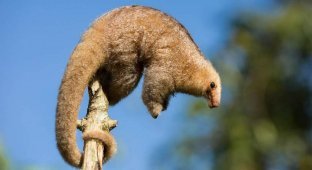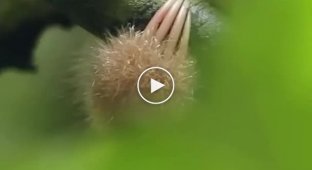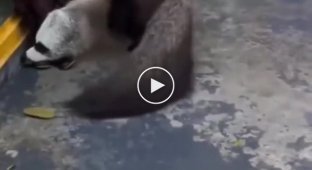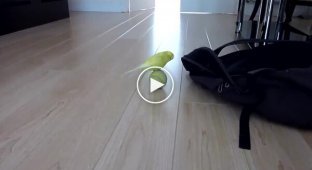Brazil's most adorable anteater claims to be a new species (9 photos)
In Brazil, as Charlie's aunt used to say, there are a lot of wild monkeys. But the wild nature of this state does not live only by monkeys. Sometimes it contains real rarities - pearls that claim to be a new species. 
Like, for example, the palm-sized silky anteaters, which lead a quiet, solitary life in the thick of the mangroves that cover the Atlantic coast of Brazil. 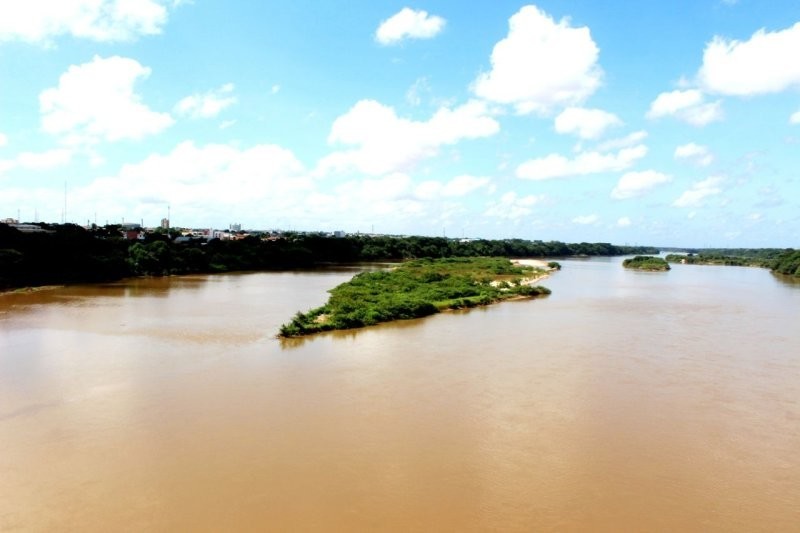
Parnaiba
If you stop and look closely at the impenetrable vegetation in the Brazilian delta of the Parnaiba River, as researcher Flavia Miranda did, you will notice a fluffy tangle the color of summer honey in the tangle of branches. The silky anteater is no bigger than a tennis ball. But he is as brave as a lion, despite his size. He raises his front paws to the sky, defensively, like a boxer in a stand-up position. Miranda, a researcher in the field of environmental medicine from the State Community University of Santa Cruz, took the necessary samples - blood and some hairs, and then released the formidable animal in its cuteness into the forest - its native element. 
Mangrove forests
Silky anteaters are the smallest representatives of their species. They appeared first of their fellows. This happened approximately between 30 and 40 million years ago. These diminutive, furry forest canopy dwellers are mostly solitary and nocturnal animals. The habitat begins in southern Mexico and extends to northern Bolivia. When babies don't spend time doing what they love most - eating insects, they spend the rest of their short (about two years) lives sleeping blissfully. 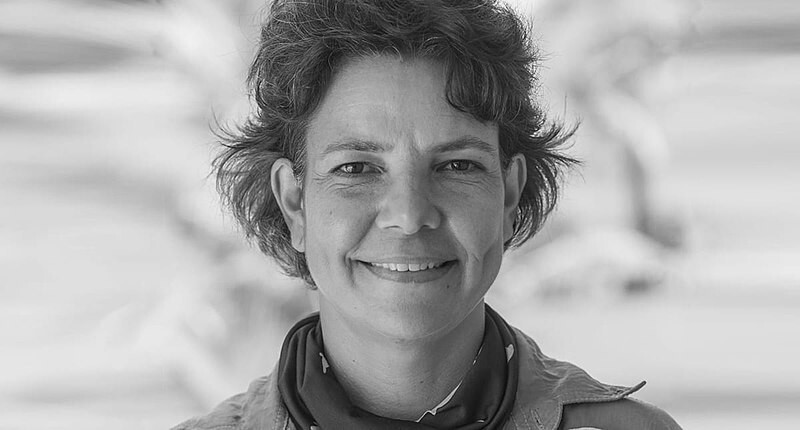
Flavia Miranda
Until now, zoologists believed that all silky anteaters were representatives of the same species. But in 2017, Miranda released the results of a DNA analysis of silky anteaters from across the continent. The analysis showed the existence of seven distinct species.
The woman devoted 30 years to studying anteaters. And now, based on the findings, Miranda is considering the possibility that the small, sleepy creature found in the Parnaiba Delta is a representative of an eighth previously unknown species. 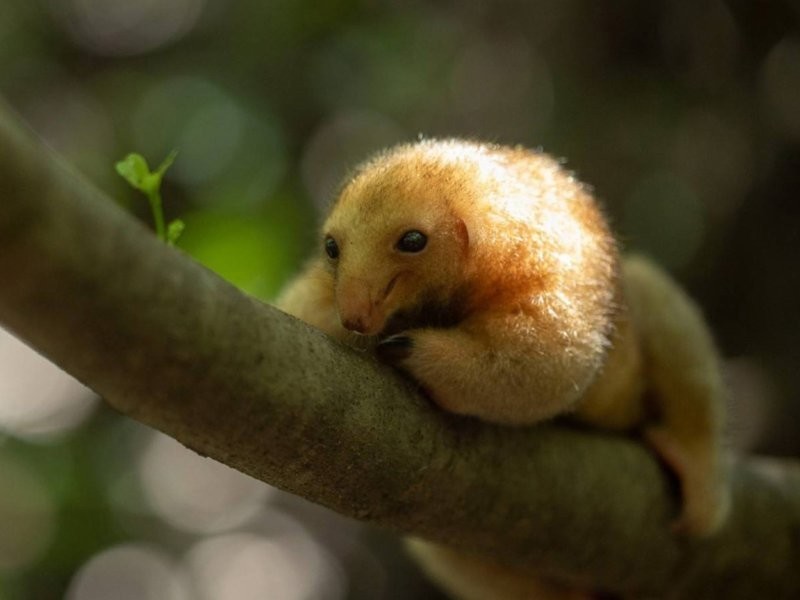
Silky anteaters lead an isolated lifestyle and do not interact with their closest relatives in the Amazon basin in the northwest and in the tropical forests of southeast Brazil. Accordingly, this population may indeed represent a relict. 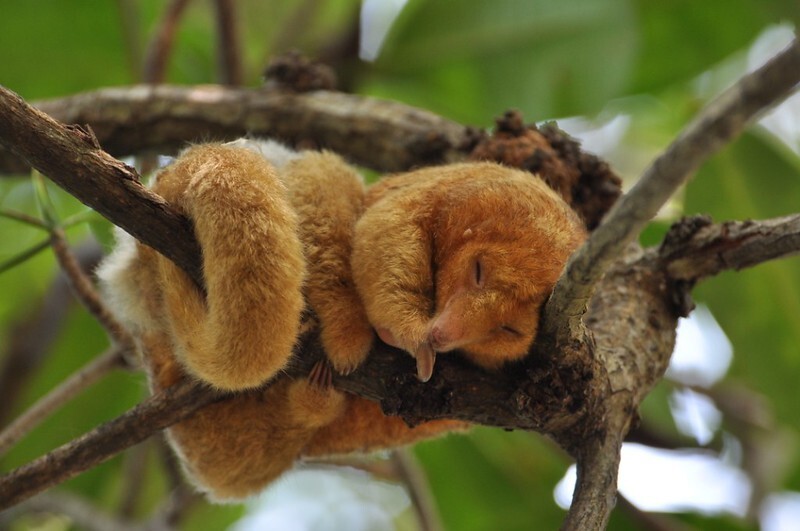
So far, Miranda's genetic analysis shows that the population has a number of differences from other species. But to confirm that delta anteaters form another previously undocumented species, DNA tests must also be confirmed by physical parameters. That is why Miranda and her assistant continue to collect tests and study the mysterious inhabitants of dense forests. It is already clear that this population is evolutionarily different from other branches and is in the process of formation. 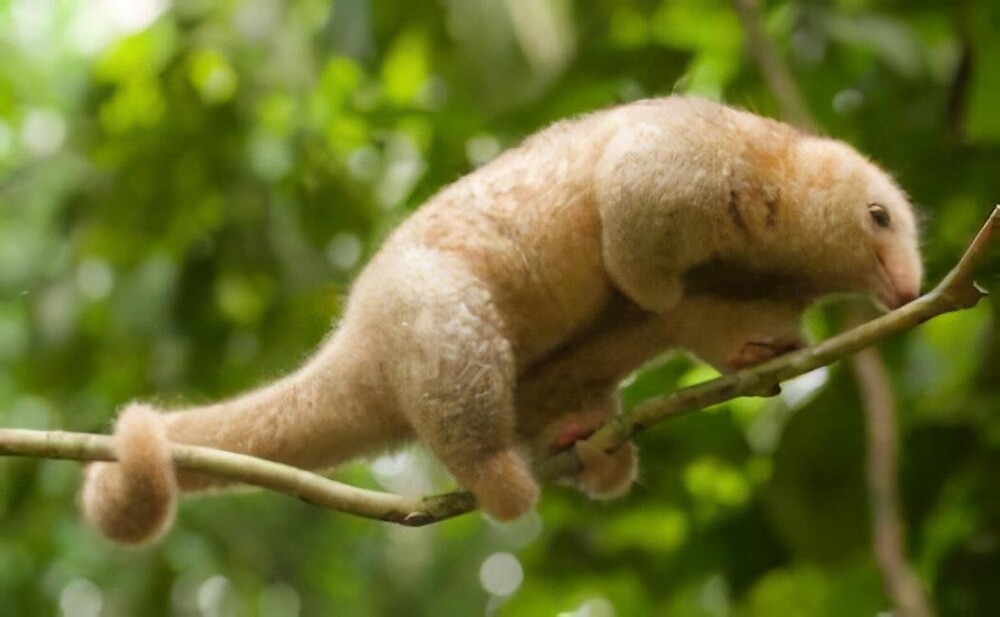
Taking into account the fact that silky anteaters are the least studied among their relatives, there is a high probability of the existence of other populations - the so-called missing links of evolution, which are still simply waiting in the wings.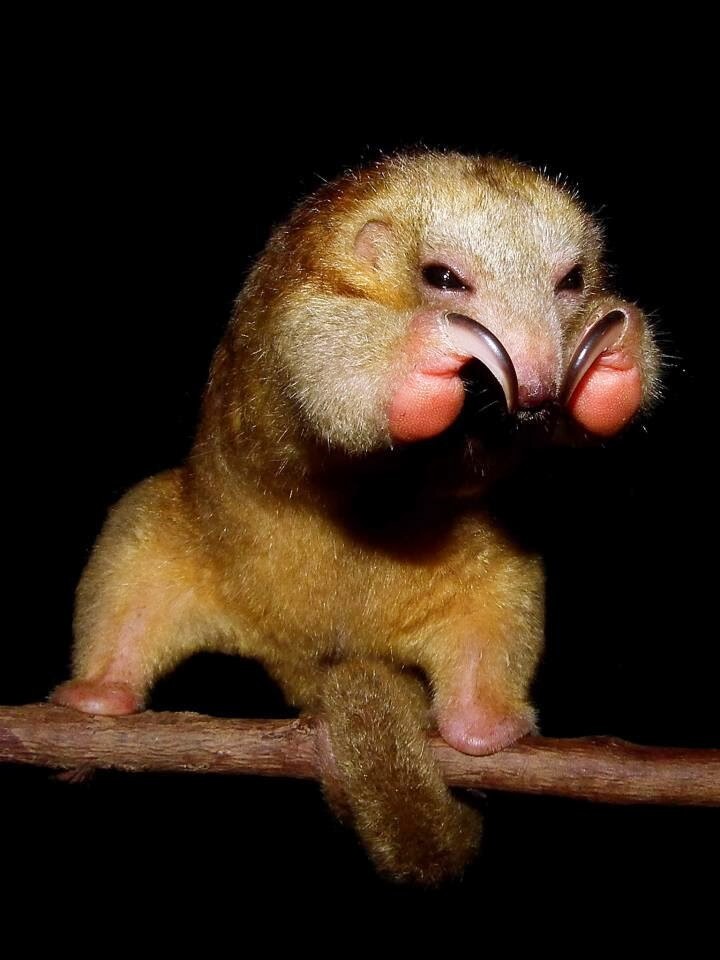
Due to the difficult terrain conditions, it is impossible for Miranda and her colleagues to calculate the total population size. But since her first visit in 2009, it became clear that the delta was not a refuge that could provide reliable protection for babies.
People cut down mangroves to build fences, housing and boats. Farmers also let their cows and pigs graze freely in the delta, where the cattle graze and trample the emerging growth. 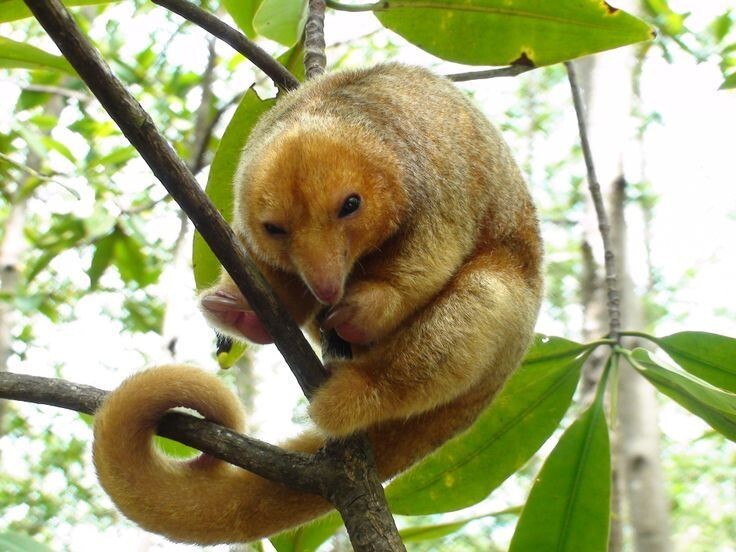
In 2011, Miranda began engaging the community in mangrove restoration. People took the initiative and began to grow seedlings for later replanting, and also closed these areas from livestock. The forest began to grow quickly. Although people are focused primarily on saving and restoring the forest, their efforts also benefit the miniature furry anteater and other bush inhabitants that need protection and conservation.













